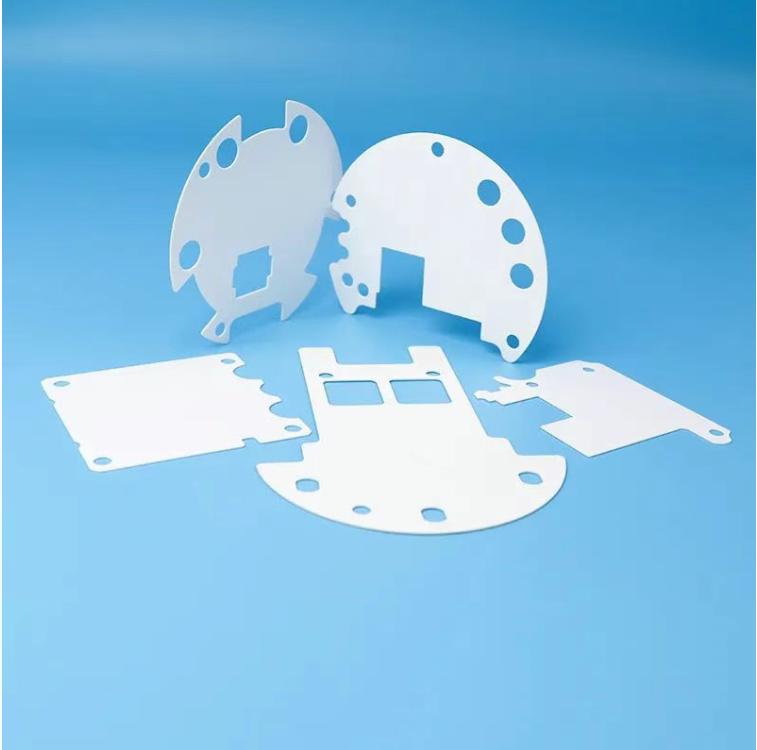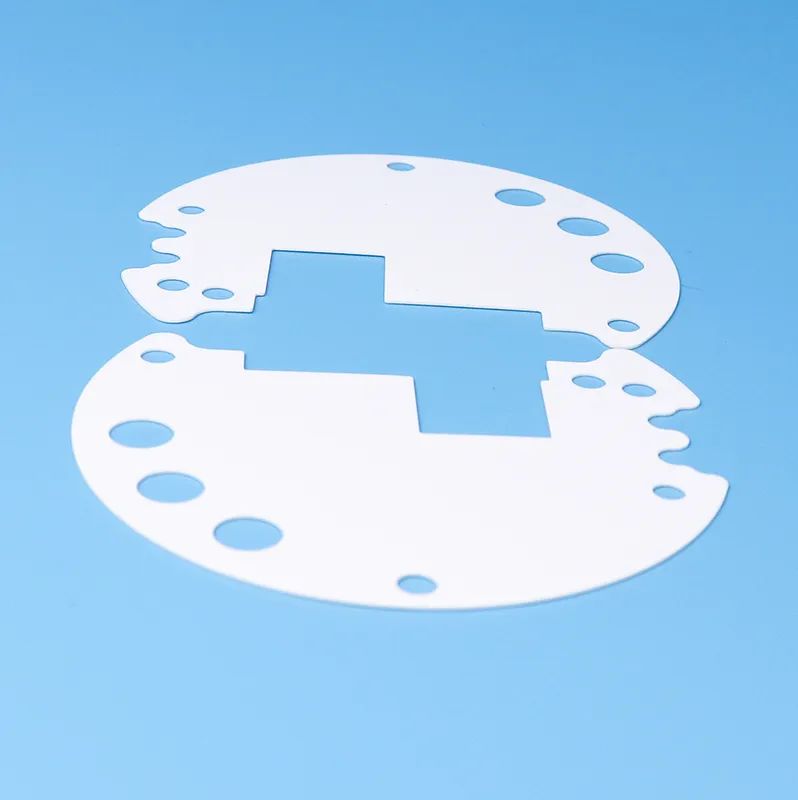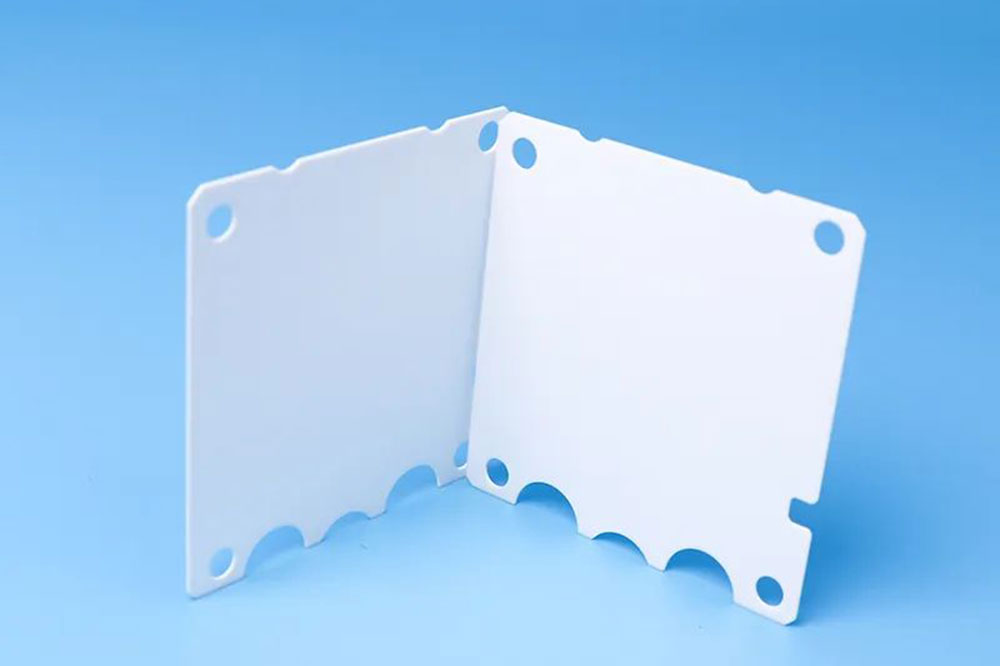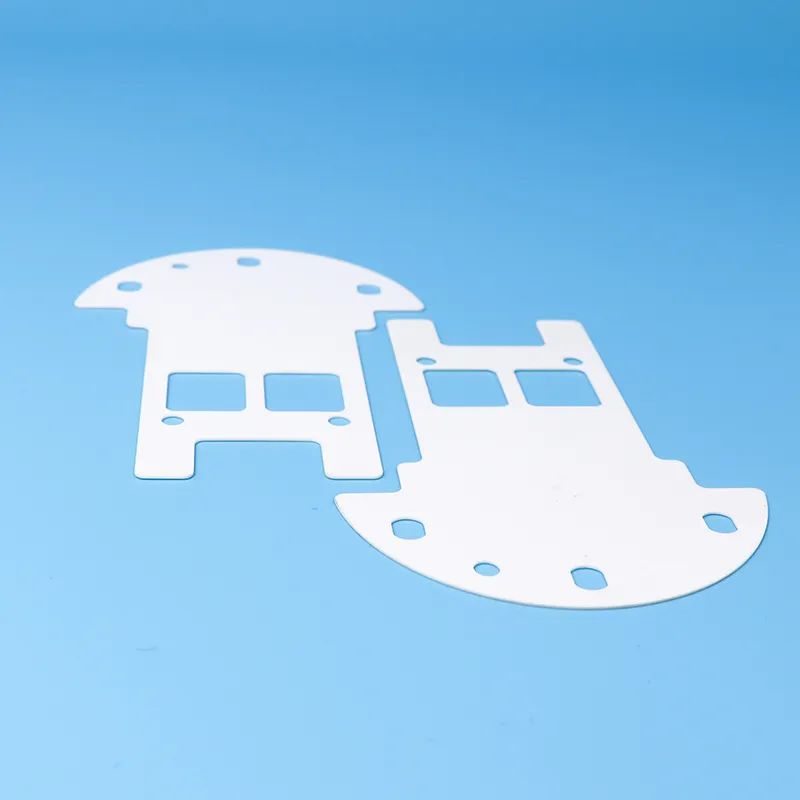- Information Classification
Special-Shaped Alumina Ceramics | Advanced Thermal Solutions
Introduction
In today’s rapidly evolving technological landscape, Special-shaped alumina ceramics have emerged as a cornerstone material, driving breakthroughs in electric vehicles, aerospace systems, high-frequency communications, and beyond. As industries pursue smarter, lighter, and more efficient designs, the need for materials that offer superior performance in thermal, electrical, and mechanical domains has never been more critical.
With industry demands pushing devices toward miniaturization, higher thermal loads, and increased reliability, Special-shaped alumina ceramics stand out for their exceptional thermal conductivity, mechanical strength, and microwave performance. This article delves into the unique properties, manufacturing innovations, and practical applications of Special-shaped alumina ceramics, showcasing how Zhengqiang Group’s advanced offerings lead the market in delivering intelligent ceramic solutions that keep pace with cutting-edge innovations.

Understanding Special-shaped Alumina Ceramics
Defining Special-shaped Alumina Ceramics
Special-shaped alumina ceramics refer to alumina (Al₂O₃) substrates precisely fabricated into customized geometries—sheets, plates, and complex profiles—to meet the rigorous demands of modern electronic and mechanical systems. Alumina is a robust ceramic with a high melting point (around 2,050°C) and exceptional electrical insulating properties. By tailoring thickness, shape, and surface finish, these ceramics deliver unmatched advantages that conventional materials like plastics or metals cannot replicate. With optimized design, Special-shaped alumina ceramics are perfectly suited for compact electronics, high-voltage insulation, RF transmission modules, and thermal dissipation components. Their precise dimensional control allows for integration into multilayer structures, hybrid circuits, and microelectronics, positioning them as essential components in the ever-advancing field of high-performance electronics.
Core Advantages of Special-shaped Alumina Ceramics
- Thermal Performance
- Thermal conductivity up to 30 W/m·K, vastly outperforming silicon-based materials
- Enables uniform heat spread, protecting sensitive components and prolonging service life
- Ideal for thermal interface materials in tightly packed systems
- Electrical Insulation
- Dielectric strength exceeding 15 kV/mm, ensuring reliable separation of electrical signals
- Low loss tangent (<0.0002 at microwave frequencies) minimizes signal attenuation in RF circuits
- Suitable for high-voltage power modules and smart grid systems
- Mechanical Durability
- Flexural strength above 350 MPa allows structural support under mechanical stress
- Hardness near 1,200 HV, resisting abrasion and deformation in rugged environments
- Inert to most chemicals, ensuring long-term stability in corrosive conditions
These combined attributes make Special-shaped alumina ceramics indispensable across aerospace, automotive, power electronics, and consumer tech sectors.
Special-shaped Alumina Ceramics in High-Performance Cooling

The “Ultra-thin Warrior” for Heat Management
Zhengqiang Group’s proprietary 0.1–1.0 mm Special-shaped alumina ceramics serve as exceptional thermal spreaders in next-generation cooling modules. As electronic systems become smaller and more powerful, managing heat becomes critical to ensure performance and longevity. Compared to conventional silicone-based thermal pads, these ceramic sheets:
- Deliver 3× higher heat dissipation through superior thermal conductivity and contact interface
- Reduce junction temperatures by up to 25°C, a significant performance gain for thermal-sensitive chips
- Extend electronic component life by mitigating thermal-induced aging, reducing failure rates significantly
The ultra-thin profile allows for installation in space-limited modules such as EV power converters, onboard chargers, and compact LEDs. Furthermore, the mechanical rigidity of ceramics ensures long-term dimensional stability under repeated heating and cooling cycles, which is essential in high-reliability environments. For designers seeking to push the envelope on miniaturization without compromising on cooling efficiency, Special-shaped alumina ceramics represent a transformative solution.
Innovative Manufacturing: From Sintering to Precision Cutting

Once-and-Done Punching vs. Laser Processing
Traditional ceramics undergo sintering followed by laser machining to achieve desired shapes, but this approach introduces residual stresses and can compromise product consistency. Zhengqiang Group revolutionizes this process by implementing a one-step precision punching technique before sintering. This innovation enables:
- One-step precision punching into final shapes with minimal geometric deviation
- Minimization of internal stress, yielding ceramics with microstrain levels <50 με and higher crack resistance
- Enhanced structural stability, ensuring consistent performance under thermal cycling and vibration
The result is a ceramic product with superior mechanical reliability, which is particularly important for applications exposed to shock, pressure, or rapid thermal change. Zhengqiang’s use of advanced pressing dies and alignment systems also allows for high-volume repeatability and lower production costs. This evolution in ceramic forming ensures that Special-shaped alumina ceramics remain structurally robust and dimensionally precise over their service life, opening up new avenues in precision electronics.
Advanced Tape Casting for Uniform Quality
The Tape Casting Workflow
Tape casting remains the gold standard for producing thin, uniform ceramic tapes. It offers unmatched control over thickness and microstructure uniformity, crucial for thin-film substrates. The process includes:
- Raw Material Preparation: Alumina powders are mixed with organic binders, dispersants, solvents, and plasticizers to form a stable slurry.
- Casting: The slurry is precisely coated onto a flexible substrate using a doctor blade to control thickness.
- Drying: Controlled evaporation under cleanroom conditions ensures defect-free green tapes.
- Green Sheet Formation: Dried tapes are delaminated to create flexible green sheets.
- Cutting & Trimming: Advanced punching or laser cutting is used to shape the tapes per final specifications.
- Final Sintering: Green parts are sintered at up to 1,600°C to densify the material and achieve desired mechanical and thermal properties.
Each step is optimized for consistency, ensuring that every Special-shaped alumina ceramics part meets strict technical specifications. The uniformity achieved through tape casting enables seamless integration into hybrid circuits, power modules, and sensor housings.
Ensuring Consistency: Key Parameters in Tape Casting
Mastering Slurry Formulation
The foundation of reliable Special-shaped alumina ceramics lies in an optimized slurry. A high-quality slurry ensures smooth casting, minimal defects, and homogeneous microstructures. Key requirements include:
- Particle Size Distribution: Optimal at 1–3 μm for balance between packing density and flowability
- Solvent Selection: Must provide controllable evaporation rates; co-boiling mixtures offer precise drying control
- Plasticizer Content: Balances flexibility and green tape integrity while minimizing volatiles
- Dispersant Efficiency: Prevents agglomeration and enhances dispersion stability over time
A robust formulation enhances green tape flexibility, thickness uniformity, and strength, reducing rework rates and boosting yield. Zhengqiang’s proprietary slurry recipes are continually optimized through rheological testing and pilot production trials, ensuring every Special-shaped alumina ceramics component upholds the highest quality standards.
Process Controls for Defect-Free Sheets
- Viscosity Monitoring: Maintained between 1,500–3,000 cP for optimal flow and leveling
- Shear-Thinning Behavior: Essential for smooth blade spreading and even thickness
- Environmental Conditions: Cleanroom environments at 25°C and 40% RH prevent contamination and ensure predictable drying behavior
Strict adherence to these parameters eliminates common defects such as pinholes, cracks, and thickness variation. Consistent control translates into higher performance and lower cost of ownership for end-users integrating Special-shaped alumina ceramics into advanced systems.
Applications Driving Industry Progress

Electric Vehicles and Renewable Energy
In electric traction inverters and battery management systems, Special-shaped alumina ceramics serve as substrates, heat spreaders, and insulators, enabling higher power densities and improved reliability. Their thermal conductivity helps maintain battery stability under fast-charging conditions, while their dielectric strength provides robust insulation for high-voltage circuitry. Their mechanical strength withstands road vibrations and thermal expansion, making them ideal for harsh automotive environments.
Semiconductor and LED Lighting
Ceramic circuit carriers and LED thermal bases demand materials that withstand high currents and temperatures. Special-shaped alumina ceramics provide:
- Excellent thermal management for high-brightness LEDs and laser diodes
- Stable dielectric properties in RF front-end modules and power semiconductors
- Compact footprint integration without compromising heat dissipation or signal integrity
Their ability to perform consistently in thermally dynamic and electrically intense environments makes them indispensable in next-gen lighting and chip-packaging solutions.
Aerospace, Satellite, and 5G Communications
In high-frequency radar, satellite links, and 5G base stations, the low-loss, high-strength nature of Special-shaped alumina ceramics ensures signal integrity and mechanical robustness in extreme environments. Their minimal thermal expansion aligns well with semiconductor materials, reducing strain in multi-layer modules. As satellites and airborne platforms demand miniaturized yet durable materials, these ceramics have become a strategic material of choice for advanced RF and microwave systems.
Why Choose Zhengqiang Group?
- Over two decades of proven high-tech ceramics manufacturing
- Integrated R&D, rapid prototyping, and global sales network
- ISO-certified processes ensuring consistent, high-quality output
- Dedicated technical support, helping you optimize every design

Conclusion
As innovation surges across multiple high-tech domains, Special-shaped alumina ceramics emerge as a vital component that combines thermal excellence, electrical insulation, and mechanical resilience. Zhengqiang Group’s unparalleled expertise—from advanced tape casting to precision punching—delivers industry-leading ceramics that empower next-generation electronics. From EVs to satellites, these ceramics are reshaping what’s possible in thermal and electrical engineering.
FAQ
Q1: What thicknesses are available for Special-shaped alumina ceramics?
A: Zhengqiang Group offers custom thicknesses from 0.05 mm to 5.0 mm, tailored to your thermal and structural needs.
Q2: Can you produce complex geometries and tight tolerances?
A: Yes—our one-step precision punching and CNC sintering processes achieve tolerances as tight as ±0.02 mm.
Q3: How does the thermal performance compare to traditional materials?
A: Our ceramics provide up to three times the heat dissipation of silicone-based pads, significantly reducing component temperatures.
Q4: What is the typical lead time for custom Special-shaped alumina ceramics?
A: Standard orders ship within 4–6 weeks. Expedited service is available for urgent projects.
Ready to elevate your product performance with Special-shaped alumina ceramics?
Contact Zhengqiang Group today for a free consultation and sample evaluation—let’s engineer the future together!

